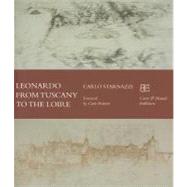- ISBN: 9788895686011 | 8895686012
- Cover: Paperback
- Copyright: 12/31/2008
This volume collects a series of complex and variously articulated themes, as much as delicate, that involve on a theoretical and historical basis both the world of architecture with that of the urban planning, as well as that of sculpture and of painting. The period here analyzed is certainly the most operational for Leonardo, during his frequent movements in the large and complex political, economic, cultural and artistic theater that was central Italy between 1500 and 1516. It is in this historical and geographical context that the focal points of the research of Starnazzi emerge with spontaneous emphasis: Florence, Cortona-Arezzo, Rome and Amboise where the artist spends the last years of his life, from 1517 to 1519. This ample work of reconnaissance and correlation of the historical sources has the aim to emphasize the cultural ties between Leonardo and the artists who have operated, according to the figurative tradition of Tuscany, with more or less direct accents also in Arezzo and its environs, from Donatello to Masaccio and to Piero della Francesca, from Francesco di Giorgio to Bramante, from Signorelli to Perugino and to Raphael. Along the itinerary of the work, the relationship that Leonardo as well had with the world of the roman classicism and with the Etruscans does not remain in the background. The author illustrates also unknown interactions that arose between Leonardo and personages that thus receive shape and consistency by bringing them into the limelight, as a result of the deciphering of one small marginal note in a sheet of the Codex Atlanticus (f. 174 v-a), as memory to us master domenico, correlated to Domenico Bernabei from Cortona known as Boccadoro, that worked actively at Amboise preparing scenographies for the court celebrations and realizing in the end the leonardian creation of the magnificent castle of Chambord.







